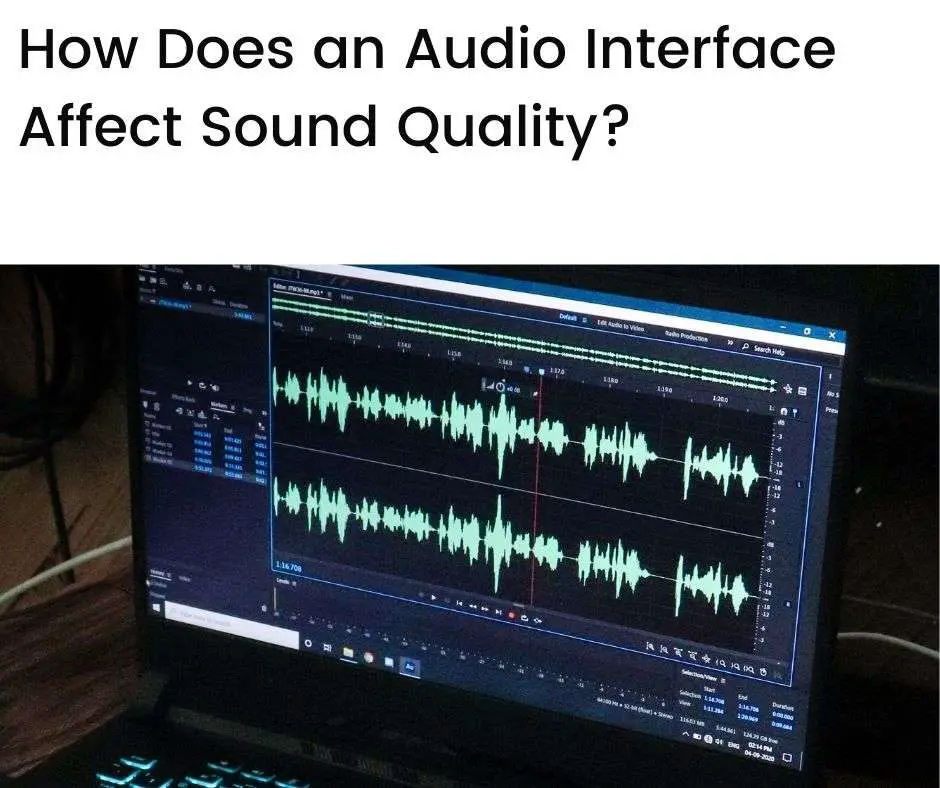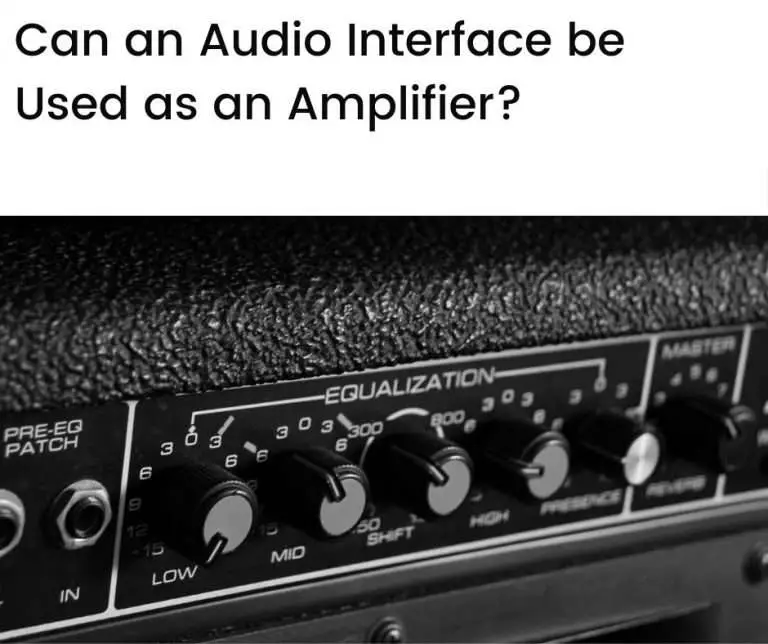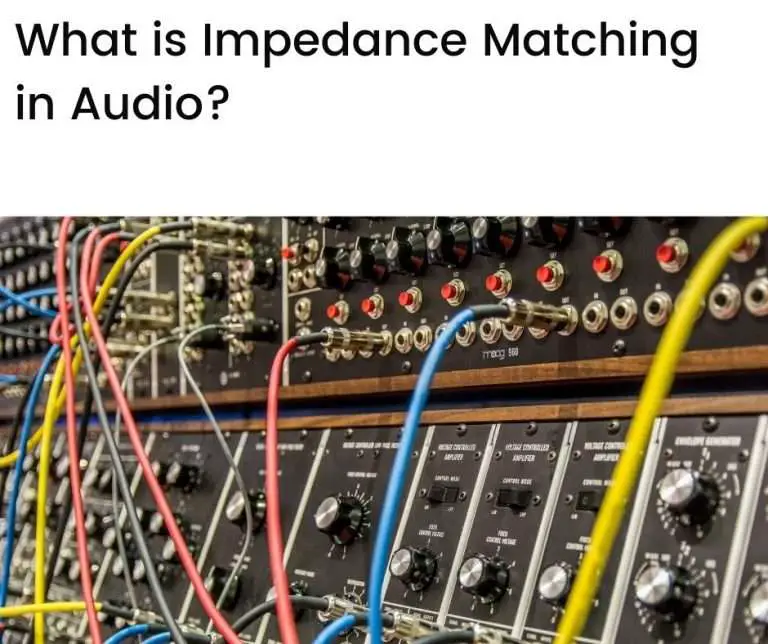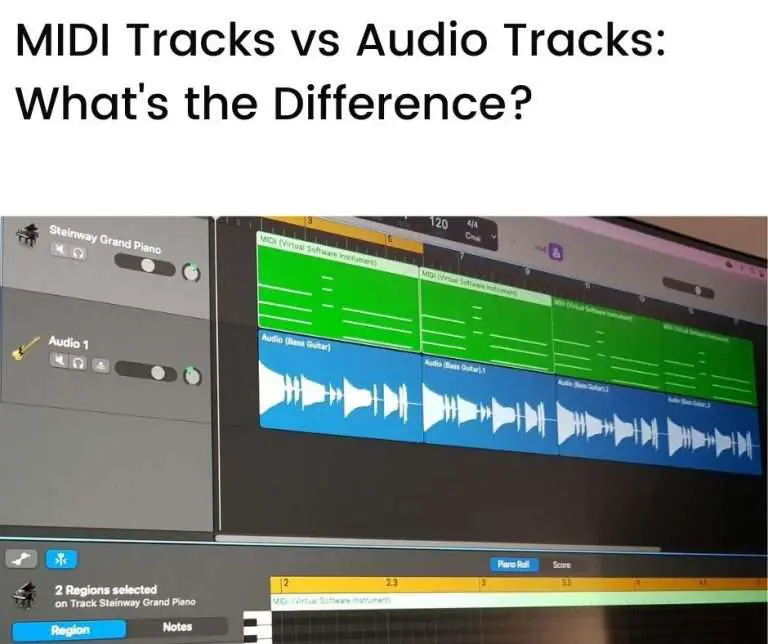An audio interface can affect sound quality in three main ways: The analog-to-digital conversion process (ADC), the quality of its pre-amps, and the level of noise it generates. Audio interfaces form the heart of most digital audio workflows, so understanding how they may impact the sound produced is important for the audio production process.
In this article we’ll look at:
- How an audio interface can affect sound quality
- Other factors that can affect sound quality
- Conclusion
How an audio interface can affect sound quality
Audio interfaces play an important role in digital audio workflows. Their primary functions are to convert sound from an analog form to a digital form (and back again), communicate with computers, and provide inputs and outputs for instruments, microphones, and (amplified) speakers.
As they perform these functions, audio interfaces can affect sound quality in three main ways:
- During the analog-to-digital conversion process (ADC)
- Through the quality of their pre-amps
- Through the noise that they generate
We’ll consider each of these in turn.
ADC
Sound as we know it—as humans experience it—is continuous and analog in nature. But modern digital audio workflows depend on sound data that is non-continuous (discrete) for processing and manipulation by computers.
Computers operate on binary, digital data. So, in order for sound to be processed by a computer, it needs to be converted from an analog to a digital (discrete) form.
This is called analog-to-digital conversion, or ADC, and it’s a fundamental part of what audio interfaces do.
ADC can affect sound based on:
- The sampling rate used during the conversion process
- The bit depth used to record sample measurements
Let’s look at these a little closer.
The essentials of ADC
ADC involves two key steps: Sampling and measurement, and the way in which these are done affect the nature of the sound produced.
During sampling, periodic “snapshots” of the incoming continuous (analog) waveform are taken. The number of snapshots taken per second—samples—is known as the sampling rate.
During each sample, a measurement of the instantaneous amplitude of the analog waveform is recorded using binary numbers.
Under a binary system, the number of bits (0s and 1s) used to record each measurement is known as the bit depth, and this affects the precision of each recording.
This whole process of sampling a continuous waveform at discrete points in time and recording the amplitude measurements using binary digits is called digitization.
Sampling rate and aliasing
How frequently should you sample an incoming analog sound wave?
As it happens, there’s a theoretical relationship called the Nyquist-Shannon theorem that provides an answer—you should sample at a frequency that’s at least twice the highest frequency of the incoming analog signal.
Human hearing is generally in the frequency range of 0-20 kHz, and CD-quality sound is sampled at 44.1 kHz—that’s a little over twice the top of the human hearing range (20 kHz). This is consistent with the Nyquist-Shannon theorem.
But many modern audio interfaces sample at much higher rates (up to 192 kHz)—why do they do this?
Although human hearing is limited to around 20 kHz, the actual frequencies produced by musical instruments and other sound sources can be much higher. Trumpets and cymbals, for instance, can produce frequencies above 80 kHz.
If sampling isn’t done at a high enough frequency, these high-frequency components of incoming sound can cause small disturbances at much lower frequencies. This effect is called aliasing.
So, if the sampling rate used by an audio interface isn’t high enough for the full range of frequencies in the input sound, aliasing may set in.
Aliasing can affect sound quality.
Bit depth and quantization distortion
As mentioned, binary numbers are used to record each sampling measurement in a digital system.
If 16-bit numbers are used, there are 65,216 (=216) unique values to record with. If 24-bit numbers are used, the number of unique values increases to 16,777,216 (=224).
When more unique numbers are available, the recording “granularity” increases and the precision of measurements improves.
Hence, there’s a relationship between bit depth and precision, and this influences the level of distortion produced during the ADC process. This distortion is referred to as the quantization distortion.
Quantization distortion is related to bit depth in the following way: For a bit depth of n, the quantization distortion is 100/2n percent.
So, for a bit depth of 16 bits the quantization distortion is 0.0015% (=100/215 percent), and for a bit depth of 24 bits it is less than 0.00001%.
The level of quantization distortion produced during the ADC process can affect sound quality.
DAC for monitoring sound
In addition to ADC, audio interfaces also convert digital sound back into an analog form—digital-to-analog conversion or DAC—so that we (humans) can hear and monitor the sound being produced.
This process may also affect the quality of the sound that’s ultimately heard.
For similar reasons to those discussed for ADCs, the specifications and parameters used in DACs (and their build quality) will influence the nature of sound that’s being monitored in the audio workflow.
Pre-amps used in audio interfaces
Most audio interfaces include pre-amps that boost (amplify) low-level input signals to line-level signals that can drive amplified speaker systems or other equipment.
Low-level signal inputs include microphones and (unamplified) instruments, such as electric guitars.
These low-level signals are very low, requiring up to 60 dB of gain to bring them to a line-level.
Like any amplifier, pre-amps can affect the sound that they amplify based on their frequency response. This means that different frequencies of the input signal may be amplified to different extents.
Most audio interface pre-amps try to apply a flat frequency response, whereby the different frequencies of the input signal are amplified (more or less) equally. But not all of them do this successfully.
So, the tonal quality of sound may be affected by the pre-amps in an audio interface.
This applies, of course, only to the low-level input signals that use the pre-amps provided in the audio interface.
Noise produced by audio interfaces
Audio interfaces are electronic devices. And like any electronic device, audio interfaces generate noise.
The noise comes primarily from the ADC process, the pre-amps used, and the electronic circuitry that makes up the interface.
The more noise generated by an audio interface, the more it may affect the quality of sound produced.
Quantization noise
We’ve already seen how ADC can generate quantization distortion—this distortion is a result of noise produced during the measurement process known as quantization noise. The smaller the bit depth, the higher the possible quantization noise.
Noise from pre-amps
We’ve also seen how pre-amps can affect the tonal quality of sound based on their frequency response characteristics.
But perhaps a bigger impact from audio interface pre-amps is the level of noise that they can generate. Higher quality pre-amps tend to generate less noise than lower quality pre-amps.
Studio grade pre-amps, for instance, can generate up to 6 dB in noise, while specialized low-noise pre-amps may generate less than 1 dB.
Electronic circuit noise
All electronic circuits produce inherent noise, and this includes the circuits found in audio interfaces.
Circuit noise arises due to the physical properties of the materials making up the circuits and the nature of flowing electric charges.
Johnson and shot noise, for instance, arise due to the inherent physical properties of circuits. They are fairly constant in magnitude across a broad range of frequencies—they are often referred to as white noise for this reason.
Flicker and burst noise, however, are caused more by the variation in resistive properties of circuits and due to irregularities in the manufacturing process. They generate noise that adds to white noise but tends to reduce with increasing frequencies (ie. dominates at lower frequencies relative to white noise).
All of these types of noise are generated by electronic circuits and add to the overall noise produced by an audio interface.
Dynamic range
One way to assess the impact of noise generated by an audio interface is to measure its dynamic range.
An audio interface’s dynamic range is the ratio of the loudest possible sound that it can produce relative to the softest possible sound.
The softest possible sound is generally the minimum level of noise that an audio interface generates.
Hence, the higher the dynamic range, all else equal, the less that the noise from an audio interface will affect the quality of sound produced.
Dynamic ranges vary from around 115 dB to 120 dB for many 24-bit audio interfaces in practice.
Other factors that can affect sound quality
While audio interfaces can affect sound quality in the ways described in this article, there are many other factors that can affect sound quality in an audio production environment.
These can vary a lot and depend on the specific components used in the audio workflow. They may also be influenced by external factors that may be difficult or impossible to control.
Some examples include:
- The quality and condition of the cables used to connect the various components in the audio workflow
- The types and quality of microphones used
- The equipment used for monitoring sound—headphones, amplifiers, and speakers—and the frequency response, noise, and other characteristics of these that can affect the output sound
- Any additional noised added to the system due to interference, external disturbances, or other sources
It’s worth keeping these in mind, in addition to the possible impacts of audio interfaces, when assessing the way in which sound may be affected during an audio production process.
Conclusion
An audio interface can affect sound quality in three main ways:
- ADC processing
- Pre-amps
- Noise
The analog-to-digital conversion (ADC) process involves the sampling and measurement of analog sound. If the sampling rate isn’t high enough, aliasing can set in and affect the quality of sound produced.
The bit depth used during ADC can also lead to quantization distortion that affects the quality of sound—the larger the bit depth, the lower the quantization distortion that’s produced.
Pre-amps are used in audio interfaces to boost low-level signals (from microphone inputs) to line-level signals (for driving amplified speakers and other equipment).
These pre-amps are generally designed to have flat frequency responses but not all of them can achieve this.
Some pre-amps, therefore, can affect the tonal quality of sound produced by amplifying different frequencies of the input sound to different extents.
Noise prevails in all electronic devices and audio interfaces are no exception.
The key sources of noise in an audio interface are the ADC process (quantization noise), the pre-amps (amplification noise), and the inherent noise in the electronic circuitry that makes up the interface.
The dynamic range is a useful indicator of the impact of noise on the sound being processed—all else equal, the higher the dynamic range, the less that the noise from an interface will affect the quality of sound produced.
While there are many possible factors that can affect sound quality in a digital audio workflow, audio interfaces are at the heart of the audio production process. It’s therefore worthwhile knowing how they can affect the quality of sound produced.







